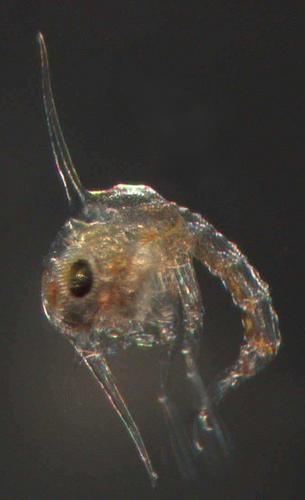当前位置:
X-MOL 学术
›
Funct. Ecol.
›
论文详情
Our official English website, www.x-mol.net, welcomes your
feedback! (Note: you will need to create a separate account there.)
Temperature modulates compensatory responses to food limitation at metamorphosis in a marine invertebrate
Functional Ecology ( IF 4.6 ) Pub Date : 2020-06-23 , DOI: 10.1111/1365-2435.13607 Gabriela Torres 1 , Luis Giménez 1, 2
中文翻译:

温度调节海洋无脊椎动物变态时对食物限制的补偿性反应
更新日期:2020-06-23
Functional Ecology ( IF 4.6 ) Pub Date : 2020-06-23 , DOI: 10.1111/1365-2435.13607 Gabriela Torres 1 , Luis Giménez 1, 2
Affiliation

|
- Under climate change, increased temperatures combined with food limitation may be critical for species with complex life cycles, if high growth rates characterize the larval development.
- We studied the effect of increased temperature and food limitation on larval survival and on functional traits (developmental time, body mass, growth) at moulting and metamorphosis in the crab Carcinus maenas.
- We followed the approach of models of metamorphosis integrating responses of body mass and developmental time to increased temperature and food limitation. We also evaluated if body mass decreased with temperature (according to the temperature‐size rule) and if developmental time followed an inverse exponential reduction (expected from some metabolic theories), as both trends are relevant for modelling effects of climate change on fitness and population connectivity.
- Larvae produced by four females were reared separately from hatching to metamorphosis to the megalopa at two food conditions (ad libitum and food limitation), and at four temperatures covering the range experienced in the field (<20°C) and those expected from climate change (>20°C).
- In general, body mass did not decrease with temperature, nor developmental time followed an inverse exponential response to temperature (under ad libitum food conditions).
- At low temperatures (<20°C), food limitation resulted (in general) in small reductions in larval survival. Body mass and nitrogen content were little affected by food limitation while effects on carbon content were small. Increased developmental time partially or fully compensated for reduced growth rates. We interpreted this response as adaptive, as minimizing fitness costs associated to reduced body mass.
- Increased temperatures (>20°C) exacerbated the effect of food limitation on mortality in larvae from three females. Developmental time was longer and larvae metamorphosed with reduced body mass, carbon and nitrogen content. Thus, compensatory responses failed and multiple fitness costs should be expected in individuals facing food limitation at increased temperatures.
- We propose that integrative studies of traits at metamorphosis could be a basis to develop a mechanistic understanding of how species with complex life cycles will respond to climate change. Such models could eventually include hormonal and metabolic regulation of development as drivers of responses to environmental change.
中文翻译:

温度调节海洋无脊椎动物变态时对食物限制的补偿性反应
- 在气候变化下,如果高生长率代表幼体发育,那么温度升高和食物限制相结合对于生命周期复杂的物种可能至关重要。
- 我们研究了温度升高和食物限制对蟹肉在蜕皮和变态时幼虫存活和功能性状(发育时间,体重,生长)的影响。
- 我们采用了变态模型的方法,该模型整合了体重和发育时间对温度升高和食物限制的反应。我们还评估了体重是否随温度降低(根据温度大小规则)以及发育时间是否遵循反指数下降(根据某些代谢理论预测),因为这两种趋势都与气候变化对适应性和人口影响的建模有关连接性。
- 在两种食物条件下(随意和食物限制),并在四个温度范围内(田间经历的温度范围(<20°C)和气候变化所预期的温度),将四只雌性产生的幼虫从孵化到变态再分化为黑加仑。 (> 20°C)。
- 通常,体重不会随温度而降低,发育时间也不会随温度呈反指数响应(在任意食物条件下)。
- 在低温(<20°C)下,食物限制(通常)导致幼虫存活率略有下降。体重和氮含量受食物限制的影响很小,而对碳含量的影响则很小。发育时间的增加部分或完全抵消了生长速度的降低。我们将此响应解释为适应性的,是将与降低体重相关的健身成本降至最低。
- 温度升高(> 20°C)加剧了食物限制对三名雌性幼虫死亡率的影响。发育时间更长,幼虫变态,体重,碳和氮含量降低。因此,在温度升高时面临食物限制的个体,补偿性反应会失败,并且应该预期会有多种健身成本。
- 我们建议对变态的性状进行综合研究可以作为发展机制的基础,以了解具有复杂生命周期的物种如何应对气候变化。这样的模型最终可能包括激素和代谢的发育调节,作为对环境变化的响应驱动力。











































 京公网安备 11010802027423号
京公网安备 11010802027423号